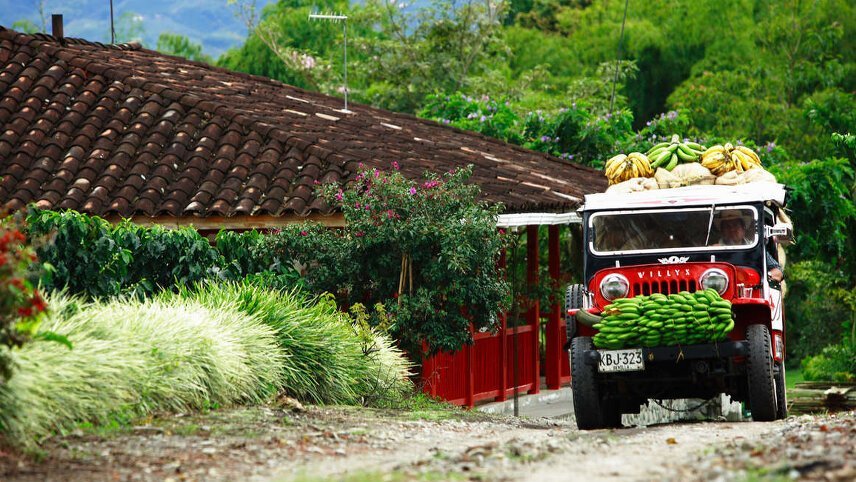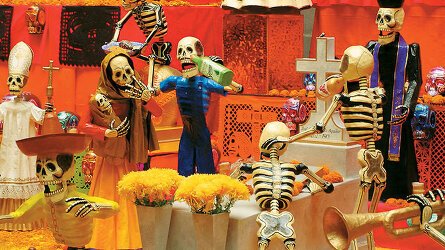Overview
Itinerary
Our tour starts today in Bogota, the beating heart of Colombia. The vibrant capital is cradled by the high the high ranges of the Cordillera Mountains, blanketing the Andean peaks with an eclectic mix of historic buildings and urban architecture.
Its name comes from the Muisca indigenous people who inhabited the region before the arrival of the Spaniards in 1538, and the remnants of not only the Muisca empire but of Colombia's many other indigenous cultures can be found in the city's impressive Gold Museum.
For those arriving on time, our Tour Leader plans to meet you in the hotel reception at 6pm for the welcome meeting and for those that wish, there is the chance to go out for dinner. There are no activities planned today, so you're free to arrive in Bogota at any time. If you'd like an airport transfer today, you'll need to arrive into Bogota's El Dorado International Airport (BOG), approximately a 45-minute drive from our hotel. If you miss the meeting, our tour leader will inform you of any essential information as soon as you catch up.
If your flight arrives earlier in the day, head out to explore the colourful streets of La Candelaria, where you'll find museums, bars and restaurants dotted between colonial convents and churches. It's a great spot to orientate yourself and get a snapshot of local life. Stay: Hotel Casa Deco (Comfortable)
This morning, we'll spend time exploring the city, watching local life pass by. First, we'll stop by the farmers' market at Paloquemao, with its overwhelming array of smells and colours. Our Tour Leader will show us some of the tropical fruits on offer, as we chat with some of the sellers.
Next, we'll visit the Gold Museum; while many cities in Latin America have their own 'Museo de Oro', Bogota's is widely regarded as housing the region's finest collection of gold from pre-Hispanic times. The museum's star exhibit is the Muisca Raft - an impressive piece of pre-Colombian artistry that fuelled the Spaniard's search for El Dorado.
From the museum, we'll walk over to La Candelaria for a traditional Colombian lunch at one of the city's many restaurants - it's a great opportunity to try the popular dish Ajiaco Santafereno, which is a hearty soup made from chicken, potato and corn. It's found throughout Colombia but is particularly popular in Bogota. After lunch, we'll continue our exploration on foot. Walking under the balconied houses from where residents often observe the comings and goings below, we'll encounter some excellent examples of colonial architecture, such as the Catedral Primada de Colombia. The visit continues with the Museo Botero, a colonial house filled with works of art by the Colombian artist and sculptor Fernando Botero, famous for his abstract portrayal of people with large, exaggerated proportions. Our city tour ends at around 5pm. Stay: Hotel Casa Deco (Comfortable) (B/L)
We get a bird's eye view of the city this morning, as we ascend Mount Monserrate by cable car. On top of the mountain there is a church, whose statue of Senor Caido, the 'Fallen Christ', has become a pilgrimage location for the locals. If weather conditions allow, from up here, we should have fine views across the city and the countryside beyond.
After our descent in the cable car, we'll depart the city, driving north to the Salt Cathedral at Zipaquira. This immense wonder was created by the salt miners, whose Catholic religion still necessitated a place to pray. Carved out of solid salt, the structure can accommodate over 8,000 people - as we walk through the vast chambers, you'll see statues and the signs of the cross etched in salt.
After lunch, we'll continue our drive to the charming little town of Villa de Leyva. Founded in 1574, this town is one of Colombia's colonial treasures. Nestled in the Andean foothills where time seems to have almost stood still, it was declared a national monument in 1954. It's easy to see why Villa de Leyva's local residents have been keen to preserve the thriving heart of this old town. Cobbled streets thread their way between whitewashed buildings and the colonial architectural style, with wood framed windows and balconies laden with flowers and plants.
We'll arrive at our hotel at approximately 5pm this afternoon.
The drive from Bogota to Villa de Leyva is approximately 145 kilometres/90 miles and will take around three hours, not including the stop at the Salt Cathedral. Stay: Hotel Villa Roma (Comfortable) (B)
We'll drive out into the foothills of the Andes to explore the local area with our guide today, first driving to 'El Infiernito' at the Zaquencipa Archaelogical Park. This pre-Columbian site was used by the Muisca people as an astronomical observatory and a place of worship. It's home to thirty stone monoliths, and we'll learn how the ingenious Muisca people used the site to plan harvest seasons and planting times. We'll then continue to the Convent of Santo Ecce Homo, which was founded by Dominican Monks in 1620. The convent marks an important moment in the history of the region, as it accelerated a period of evangelization in a region populated by the 'infidel' indigenous communities.
We'll also drive to Pozos Azules for a quick viewpoint stop. These artificial pools are created by an accumulation of rainwater and minerals that, particularly in sunny weather, transform into a startling blue and green colour, which contrasts with the surrounding arid landscape to make them appear like oases in a desert.
After returning to Villa de Leyva for lunch, the afternoon is free to soak up the town's peaceful charm. You might like to take the 30-minute walk to the odd 'Terracotta House', a completely unique architect-built house on the outskirts of Villa de Leyva, or take a longer walk to 'El Mirador del Cristo', to get a view over the town. Alternatively, spend the afternoon relaxing in Villa de Leyva, home to artists, artisans and museums. Stay: Hotel Villa Roma (Comfortable) (B)
We set off further north this morning. The central part of Colombia that separates Bogota from the Caribbean is littered with pretty towns with terracotta roofs and winding cobbled roads. Our final destination is hailed as the prettiest in all Colombia - Barichara. Its white-washed houses with colourful doors and wrought-iron balconies are a distinct contrast from the metropolitan cities of Bogota and Medellin.
En route to Barichara, we'll make a stop at Socorro. This small, unassuming town has a big place in Colombia's history - it's known as the 'Cradle of Liberty', for its role as the town where the first uprising against Spanish rule occurred, and where the steps towards Colombia's independence began. We'll take a short stroll around the town to stretch our legs and see the sights, including the enormous stone-built cathedral, and depending on timings will most likely make this town our lunch stop
We'll then continue to Barichara and have the rest of the afternoon free to take in this charming colonial town. The total drive time to Barichara is approximately five hours. Stay: Hotel Misión Santa Bárbara (Comfortable) (B)
The easy hike from Barichara to Guane takes in part of the Camino Real, or 'Royal Road' - a cobblestone path that dates back hundreds of years, connecting the area's farmlands. This postcard-pretty walk leads us through Colombia's peaceful countryside, through meadows and tree-lined corridors, with the Andes ever-present in the background. The beauty of this 6 kilometre/3.5 mile walk is that from Barichara it is almost entirely downhill. With time to admire the views, it should take around two hours, possibly three depending on our speed. Please note, the walk is downhill on stone paths and steps and may be tough for people with knee problems - you might like to bring walking poles along with you.
In Guane, we'll have a break to visit the small village museum, before jumping in a rickshaw or one of the colourful chiva buses and heading back up to Barichara. For those who don't wish to do the walk, Barichara has plenty of charm to enjoy a leisurely morning.
In the afternoon, we'll have a fascinating experience at a rammed earth workshop, led by the architect Santiago Rivero. Most houses in Barichara and the surrounding area are made by this centuries-old technique, using a low-cost material - earth - that makes house-building accessible to all. Many of the buildings here are more than 300-years old. Rivero is trying to protect the history of the town and keep this tradition alive - our workshop will have some hands-on elements and help us to appreciate the significance of why these charming towns look the way they do. Stay: Hotel Misión Santa Bárbara (Comfortable) (B)
We drive to Bucaramanga Airport this morning, but before leaving Colombia's beautiful central zone we'll head into Chicamocha National Park, home to one of the country's most astounding natural wonders. With peaks and valleys extending into the distance, the vast canyon claims to be one of the largest in the world. We'll take a cable car ride down into the canyon and up the other side, with panoramic views from all sides.
Continuing the scenic drive, we'll head to Hacienda el Roble for our included lunch. This old colonial house is a coffee hacienda with a number of rooms and a restaurant on site, all surrounded by superb grounds. We'll try authentic local cuisine here during our lunch, and of course have the chance to try the coffee.
We continue from the hacienda to Bucaramanga Airport, and fly to Armenia via Bogota. If direct flights become available, we'll take those as a preference. Armenia is the capital of the Quindío department, an important coffee growing centre in the foothills of the Andes range. Immediately on leaving the airport, we'll drive to our hotel located about 30 minutes away, arriving in the late evening. This old, characterful hacienda has views out to the Quindío valley, which we'll spend the next two days exploring. Stay: Hacienda Combia (Comfortable) (B)
Colombia is renowned for its excellent food, with different regional specialties in almost every town, from Bandeja Paisa (basically the Colombian equivalent of a full English breakfast, but with plantain, avocado, cornbread, delicious frijoles and heaps of different meats) to pandebono, a traditional bread made with cheese, frequently served with guava paste. Today we'll be getting stuck into the gastronomy with a cooking class at our own hacienda. A local chef will help us to prepare 'sancocho', a typical Colombian soup that is stuffed full of vegetables, yuca, corn, plantain and either chicken, fish or beef. It's frequently eaten with avocado and white rice on the side. We'll make this together, alongside some other tasty appetizers and drinks, which we eat together for lunch.
Our hacienda here in coffee country happens to be surrounded by its own coffee farm. We'll spend the afternoon visiting the farm, learning about the whole process from the planting of the beans all the way through the picking and roasting process, finishing off with trying the fresh coffee. The physical work undertaken by the pickers in hauling their loads across the mountainside is quite amazing.
If, for any reason, the hotel changes, we'll visit one of the other many coffee farms in this area. Stay: Hacienda Combia (Comfortable) (B/L)
After breakfast, we'll take a drive to Salento, where we climb aboard an immaculately restored vintage Willys jeep and drive into the Cocora Valley. We're in the foothills of the Andes here, hiking amongst a multitude of towering wax palms that pepper the mountainside like pins in a cushion. These countryside walks are on undulating terrain with well-trodden paths and our walk will take approximately two hours. Before leaving the Cocora Valley, we'll have a typical lunch with views of the mountains. Trout is particular to the area, usually served with plantain and rice, but you may also find yucca and arepas too.
On our return to Salento, we'll play an explosive round of Colombia's national game - Tejo. This bizarre sport involved players lobbing tejos (metal discs) towards a metal ring in a sandpit that is loaded with gunpowder-filled pieces. The aim? Explosion! This lively bowls-like game is best played with a beer and a sense of fun. After the game, we'll have some time free to explore charming Salento town, its colourful architecture so characteristic of this coffee growing region, before driving back to our hacienda in the Quindio Valley. Stay: Hacienda Combia (Comfortable) (B/L)
This morning, we'll drive north to Medellin, known as the 'City of Eternal Spring' due to its temperate year-round climate. Surrounding Medellin are a series of small, traditional towns, or 'pueblos', each with a unique character and charm. These pueblos are favourite spots for local Medellin residents (or 'Paisas') to escape the city during weekends or holidays, and we plan to visit peaceful Jerico en route to the city. Surrounded by low-lying mountains and greenery, and with a small-town charm of historic Spanish buildings, colourful houses, cobbled streets and churches, Jerico is a tranquil place to make a lunch stop. We plan to visit the striking cathedral, as well as one of the workshops in the town - Jerico is known throughout Colombia for its hand-made leather carriel bags, which were originally functional bags used by coffee farmers, but have since become a more fashionable item in the west.
We'll continue from Jerico to Medellin, a drive of approximately two hours. The total drive today will be around seven hours. Stay: Faranda Hotel (Comfortable) (B)
We'll take a trip out of the city this morning to the picturesque lakeside town of Guatape, where the houses are painted in glorious pastel shades, and where we will visit the enormous rock of El Penol. This monolith is Guatape's most visited site, and the 700-step climb to the top is well worth it for the astounding views over the town, the lake and the mountains before us. After taking a breather on the top, we descend to Guatape, where we'll take a ride on one of the colourful 'rickshaws' (moto-taxis) to explore the town in style. It's known as the 'Pueblo de Zocalos' for the intricate paintings of animals, musical instruments, flowers and birds found on the lower half of almost every building in the centre. The cobblestoned streets are alive with colourful architecture and locals going about their daily business.
After lunch we'll return to Medellin, where in the late afternoon we will have some free time. Stay: Faranda Hotel (Comfortable) (B)
We'll spend our final morning here discovering Medellin's past and present with a local guide. We'll travel by private transport, on foot and by cable car, including the outlying suburban area of Comuna 13. The tour aims to give the historical perspective behind Pablo Escobar's residency in Medellin, including what it was like when he was alive, and the changes that have made it the modern and diverse city it is today. We'll visit his old home, and the Casa de la Memoria Museum, an initiative started by the victims of the drug traffic trade that contributed to overcoming the conflict in Medellin. We will also visit the Parque Memorial la Inflexion, built where the Monaco building, Escobar's property, was located until its demolition in 2019. There were as many as 46,000 victims of narcotraffico in Colombia, and this park was built in their memory. This tour isn't designed to glorify Escobar's lasting imprint on the city, but to memorialise the people affected by the drug trade and to celebrate the modern face of Medellin.
In the afternoon, we will travel to the airport and fly to Cartagena on the shores of Colombia's Caribbean Sea. Depending on the flight schedules, we should arrive at around 6 or 7pm (schedules may change), and in the evening we may have chance to see a little of the cobblestone streets and colonial convents of the old walled town. Stay: Hotel 3 Banderas (Comfortable) (B)
Cartagena is a wonderful place to get lost in, with old plazas and churches galore, as well as plenty of cafes, restaurants, markets and a warm, welcoming atmosphere around every corner. We're free to explore today. For those who'd like to go outside the city walls, you may want to take a taxi ride to visit the hilltop convent of Santa Cruz de la Popa, with its panoramic views of the city, or the 16th-century fortress of San Felipe.
In the early evening, we'll take a short drive out to nearby La Boquilla. Now an offshoot of Cartagena itself, this one-time fishing village still has a hint of its past and the residents balance their fishing heritage with tourism. There are fantastic sunsets from here, and we'll have our final drinks and dinner at the beach, before returning to our hotel for the evening. Stay: Hotel 3 Banderas (Comfortable) (B/D)
The trip ends after breakfast at our hotel in Cartagena.
There are no activities planned today, so you're free to depart from Cartagena at any time. If your flight is departing later in the day, luggage storage facilities are available at our hotel. If you'd like an airport transfer today, you'll need to depart from Cartagena's Rafael Nunez International Airport (CTG), approximately a 20-minute drive from our hotel. (B)
Trip Inclusions
- A diverse journey covering high mountains and forest to colonial towns and the Caribbean
- Hike amongst towering wax palms in the Cocora Valley and discover Pablo Escobar's Medellin
- Learn to make Andean specialities, and taste sancocho and arepas, as well as tasty Caribbean seafood
- Moderate pace tours are ideal if you want a holiday which combines exciting activities and experiences with plenty of time to relax and unwind. Typically you'll be active and busy for part of the day but then also have time to rest and recharge your batteries.
- Accommodation, itinerary and inclusions subject to change.
- Price is for land, cruise and internal flights as specified. Flights not specified are not included
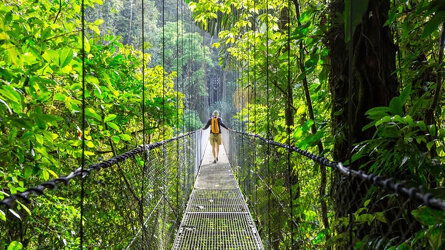
Launching in 1981, Explore offer trips from over 130 countries - from classic small group tours. Read more
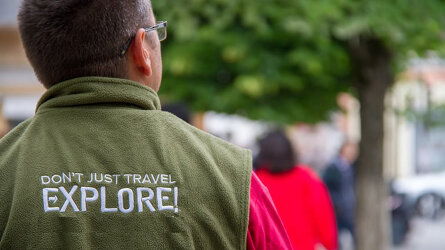
Explore's leaders are more than just your typical guide. They're your local expert are are passionate about sharing their expertise with you. Read more
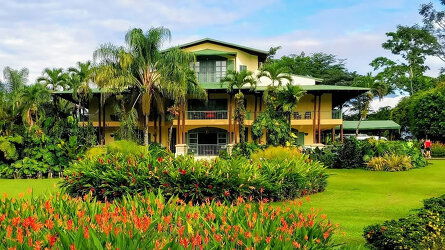
The places Explore stay are every bit as important as the sights they visit and the things you do. Read more
Brochure
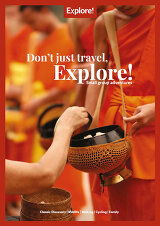
Explore Small Group Adventures (2024-25)
Availability
A definite departure means minimum numbers have been reached for this departure to operate. Your Global Journeys Travel Advisor will check the availability of your departure date when you enquire. Additional savings may apply. We guarantee the lowest price in Australia. T&C’s apply.
Tour & cruises prices are per person. Prices shown have savings applied, are subject to availability and may be withdrawn at any time without notice. Pricing and trip details are correct at this point in time, however are subject to confirmation at the time of booking and are subject to change by Explore. For cruise itineraries, cabin images are sourced from Explore. These should be treated as indicative only. Cabin inclusions, upholsteries and room layout may differ to the image(s) shown depending on the ship selected and your sailing dates.
